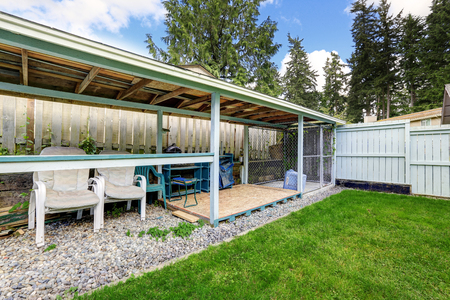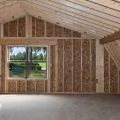Understanding Hardscape in Landscape Design
When planning your garden, it’s important to think beyond just plants and flowers. That’s where hardscape comes in. Hardscape refers to the non-living elements of landscaping—things like walkways, patios, retaining walls, and garden beds. These structures provide form and function, helping to define spaces and make your outdoor area more usable and visually appealing.
Hardscape vs. Softscape: What’s the Difference?
To better understand hardscape, it helps to compare it with softscape, which includes all the living parts of a landscape design such as grass, trees, shrubs, and flowers. Both are essential for a balanced outdoor space, but they serve different purposes.
| Feature | Hardscape | Softscape |
|---|---|---|
| Definition | Non-living elements (e.g., stone paths, decks) | Living elements (e.g., plants, lawns) |
| Main Function | Structure & usability | Aesthetic & natural beauty |
| Maintenance | Low maintenance | Regular care needed (watering, pruning) |
| Seasonal Impact | Unaffected by seasons | Affected by climate and weather changes |
Why Hardscape is Essential in Garden Design
Hardscaping adds structure and flow. Whether its a stone pathway guiding guests through your backyard or a patio where you enjoy summer barbecues, hardscape features create defined areas that improve how you use your outdoor space.
It also improves functionality. For example, walkways keep foot traffic off your lawn and flower beds, helping preserve plant life. Retaining walls can help manage soil erosion on sloped yards. Raised garden beds not only look neat but also improve drainage and accessibility for planting.
Aesthetic appeal is another major benefit. The right combination of textures—like wood decks paired with gravel paths or concrete pavers framed by lush greenery—can elevate your gardens overall look while reflecting your personal style.
Examples of Common Hardscape Elements:
- Paths: Create direction and flow while protecting soft areas like grass.
- Patios: Extend your living space outdoors for dining or relaxing.
- Garden Beds: Organize plantings and add dimension to flat yards.
- Borders and Edging: Define spaces cleanly between lawns and beds.
- Retaining Walls: Manage slopes and prevent soil movement.
The key is balance. By combining hardscape with softscape thoughtfully, you can create a garden that’s not only beautiful but also practical year-round.
2. Designing Garden Paths with Purpose and Style
Garden paths are more than just walkways—they guide movement, create structure, and add personality to your outdoor space. When thoughtfully designed, they connect different areas of the garden while also enhancing its overall look and feel. Whether youre aiming for a cozy cottage vibe or a modern minimalist aesthetic, the right path can make all the difference.
Plan Your Path with Function in Mind
Before choosing materials or shapes, think about how the path will be used. Will it be a main walkway leading to your front door, or a secondary path winding through flower beds? Consider foot traffic, accessibility for kids or older adults, and how the path connects various parts of your yard. A well-planned path should feel natural and intuitive to walk on.
Path Purposes & Suggested Styles
| Path Type | Main Purpose | Recommended Style |
|---|---|---|
| Main Entry Path | Directs visitors to your home entrance | Straight or gently curved with formal materials like brick or pavers |
| Garden Walkway | Encourages exploration of garden areas | Meandering with natural materials like gravel or flagstone |
| Utility Path | Access to side yards, sheds, or compost bins | Simple and durable materials like concrete or stepping stones |
Select Materials That Match Climate and Style
The material you choose should not only fit your design goals but also hold up well in your regional climate. For example, freeze-thaw cycles in northern states may crack poured concrete over time, while gravel might wash away easily in heavy rains. Below are some popular path materials and their pros and cons:
Common Pathway Materials Comparison
| Material | Aesthetic Appeal | Climate Suitability | Main Pros | Main Cons |
|---|---|---|---|---|
| Pavers (Concrete/Brick) | Formal and classic look | Good for most U.S. regions with proper base installation | Durable, customizable patterns | Labor-intensive installation; can shift if not set properly |
| Naturally Cut Stone (Flagstone) | Rustic and elegant appearance | Ideal for dry climates; may need sealing in wet areas | Naturally textured; blends with landscape well | Higher cost; uneven surface may affect accessibility |
| Gravel or Crushed Stone | Casual and natural feel | Suits drier regions; needs edging in rainy zones to prevent movement | Easier DIY install; budget-friendly | Kicks up dust; can migrate over time without borders |
| Poured Concrete | Sleek and modern style options available with stamps or stains | Sensitive to freeze-thaw unless reinforced properly | Smooth finish; low maintenance once set correctly | Permanence limits future changes; may crack over time without control joints |
| Wood Stepping Pads or Decking Tiles | Naturally warm texture that fits organic gardens well | Treated wood works better in humid climates; composite lasts longer overall | Adds warmth and charm; easy to replace individual pieces if needed | Might get slippery when wet; requires upkeep like sealing or staining annually depending on wood type |
Create Visual Interest with Layout Techniques
You can enhance the appeal of your garden paths by playing with layout patterns. Try alternating materials, staggering stepping stones at irregular intervals, or incorporating curves to add softness. Edging also helps define the path—use bricks, metal strips, or low-growing plants like thyme along the sides for a polished finish.
Tips for Stylish Path Design:
- Add lighting along paths for nighttime safety and ambiance.
- Mimic house architecture—use similar tones or shapes found on exterior walls.
- If possible, make paths wide enough (at least 36 inches) for two people to walk side by side comfortably.
- Avoid perfectly straight lines in informal gardens—curves feel more organic.
- Add focal points like a bench, birdbath, or sculpture at the end of a path segment.
A well-designed garden pathway does more than lead you from point A to B—it invites exploration, supports accessibility, and ties together all your landscape elements into one cohesive experience. By choosing suitable materials and thoughtful layouts tailored to your environment and style, you can transform your outdoor space into something both practical and beautiful.

3. Creating Inviting Patios for Outdoor Living
Patios are more than just flat surfaces in your yard—theyre outdoor living rooms where family and friends can gather, relax, and enjoy the beauty of your garden. By thoughtfully designing your patio, you can create a cozy and functional space that complements both your home and your lifestyle. Heres how to make patios an integral part of your gardens hardscape design.
Layout Options That Suit Your Space
The first step in creating a great patio is choosing a layout that fits your yard’s size and shape. Whether you have a large backyard or a small urban garden, there’s a patio style that works for you.
| Layout Style | Best For | Description |
|---|---|---|
| L-Shaped Patio | Corner yards or homes with wrap-around gardens | Creates separate zones for dining and lounging while maximizing space. |
| Central Patio | Large open backyards | Acts as the focal point of the landscape, perfect for hosting gatherings. |
| Courtyard Style | Small or enclosed spaces | Offers privacy and a cozy vibe, often surrounded by walls or tall plants. |
| Multi-Level Patio | Sloped yards or large properties | Adds dimension with different levels for various uses like cooking, dining, and relaxing. |
Choosing the Right Materials
The materials you choose for your patio will impact its appearance, durability, and maintenance needs. Here are some common options:
| Material | Look & Feel | Pros | Cons |
|---|---|---|---|
| Paver Stones | Clean, modern, versatile shapes and colors | Durable, easy to repair individual pieces, many design options | Can shift over time if not installed properly |
| Naturally Cut Stone (Flagstone) | Organic, rustic look with irregular shapes | Aesthetic appeal, long-lasting, blends well with nature | More expensive and labor-intensive to install |
| Concrete Slab | Smooth, contemporary surface with customizable finishes | Budget-friendly, low maintenance, quick to install | Can crack over time due to ground movement or temperature changes |
| Brick Pavers | Classic, warm-toned traditional look | Tough material, charming appearance, eco-friendly options available | Moss buildup may occur; requires sealing to maintain color and finish |
Complementary Landscape Features That Enhance Comfort and Style
A patio should feel like a natural extension of your home. To make it more inviting and functional, consider adding features that enhance both comfort and style:
- Shade Structures: Pergolas, umbrellas, or retractable awnings help block harsh sun during hot days.
- Outdoor Lighting: String lights or built-in LED fixtures add ambiance and improve safety at night.
- Built-in Seating: Stone benches or wooden seat walls save space and provide additional spots to sit.
- Fire Pits or Outdoor Fireplaces: Great for cool evenings and creates a cozy gathering point.
- Potted Plants & Planters: Add greenery without taking up ground space—ideal for small patios.
Bonus Tip: Connect Your Patio to the Garden Pathways
A well-placed pathway leading from your patio into other parts of the garden creates flow and invites exploration. Use matching materials or complementary textures to tie the look together seamlessly.
Your Patio Can Be More Than Just a Place to Sit—It Can Be Where Memories Are Made!
If designed thoughtfully with the right layout, materials, and features, your patio can become the heart of your outdoor living experience—a place where summer barbecues happen, kids play in the sun, or you simply unwind after a long day surrounded by nature.
4. Defining Spaces with Raised Garden Beds
Raised garden beds are more than just practical planting areas—theyre a smart way to bring structure and visual interest to your outdoor space. By lifting the soil above ground level, these beds help define different zones in your garden while also improving drainage and making gardening more accessible.
Functional Benefits of Raised Beds
One of the main reasons homeowners choose raised garden beds is for better control over soil quality and drainage. They also make it easier to manage weeds and pests, since you’re working with a contained area. For those who love growing vegetables or herbs, raised beds offer a clean, organized look thats both useful and attractive.
Key Advantages:
| Benefit | Description |
|---|---|
| Improved Soil Control | Allows for customized soil mixtures ideal for specific plants. |
| Better Drainage | Prevents waterlogging, especially in areas with poor native soil. |
| Easier Access | Reduces bending and kneeling—great for seniors or those with mobility issues. |
| Pest Management | Makes it harder for pests like slugs and rabbits to access plants. |
Adding Architectural Appeal
Beyond function, raised beds can act as architectural features that add depth and texture to your landscape design. Whether made from wood, stone, or metal, they offer contrast against softscapes like grass or flower borders. You can use them to guide foot traffic, frame patios, or create focal points within larger garden areas.
Design Tip:
Try mixing materials—like combining natural wood with stone pavers—to add dimension and character. Varying the height of your raised beds can also bring a layered look that makes small yards feel more spacious and dynamic.
5. Tips for Harmoniously Blending Hardscape and Softscape
Creating a beautiful garden means finding the right balance between hardscape elements—like paths, patios, and garden beds—and softscape features such as plants, trees, and flowers. Here are some practical tips to help you blend these elements seamlessly while keeping your garden natural and inviting.
Scale Matters: Match the Size to the Space
One of the first things to consider is scale. Large patios or wide pathways can overwhelm a small backyard, while tiny stepping stones might get lost in a spacious garden. Aim for proportion and visual balance. For example, if your garden has tall trees or large shrubs, use wider paths or larger pavers to complement the overall look.
Scale Guidelines Based on Garden Size
| Garden Size | Recommended Path Width | Patio Dimensions |
|---|---|---|
| Small (under 500 sq ft) | 18″ – 24″ | 6 x 6 to 8 x 8 |
| Medium (500 – 1000 sq ft) | 24″ – 36″ | 10 x 10 to 12 x 12 |
| Large (over 1000 sq ft) | 36″ and up | 15 x 15 or more |
Choose Colors That Complement Nature
The color of your hardscape materials should enhance the natural tones of your garden. Earthy colors like tan, gray, rust, and brown typically work well with most planting schemes. Try to avoid bright or artificial colors unless youre going for a bold, modern design.
Select Materials That Feel Organic
Use materials that echo nature’s textures. Flagstone, gravel, decomposed granite, brick, and wood all blend beautifully with plant life. Smooth concrete or polished stone might look too sleek unless balanced with lush greenery or rustic decor.
Material Suggestions by Garden Style
| Garden Style | Hardscape Material Ideas |
|---|---|
| Cottage Garden | Brick paths, wooden raised beds, natural stone borders |
| Modern Garden | Smooth concrete slabs, steel edging, geometric pavers |
| Mediterranean Garden | Terra cotta tiles, gravel paths, stucco walls |
| Woodland Garden | Bark mulch trails, rough-cut stone steps, log benches |
Plan for Seasonal Changes
Your garden changes with the seasons—so should your design considerations. In spring and summer when plants are full and vibrant, hardscape may fade into the background. But in fall and winter when foliage dies back, your paths and patios take center stage. Choose hardscape features that still look attractive year-round.
Quick Tip:
Add evergreen shrubs or winter-interest plants near patios or along walkways to keep your space looking lively even in colder months.
Create Natural Transitions Between Elements
Avoid abrupt changes between hard surfaces and planting areas. Use groundcovers like creeping thyme or moss between stepping stones. Line patios with planter boxes or border gardens to soften edges. This not only looks better but also helps integrate structures into the landscape more organically.
Your Garden Should Tell a Story
The most charming gardens feel like they’ve grown naturally over time. By paying attention to scale, color coordination, material choice, seasonal interest, and smooth transitions between elements, you’ll create a space that feels both intentional and effortlessly beautiful.


